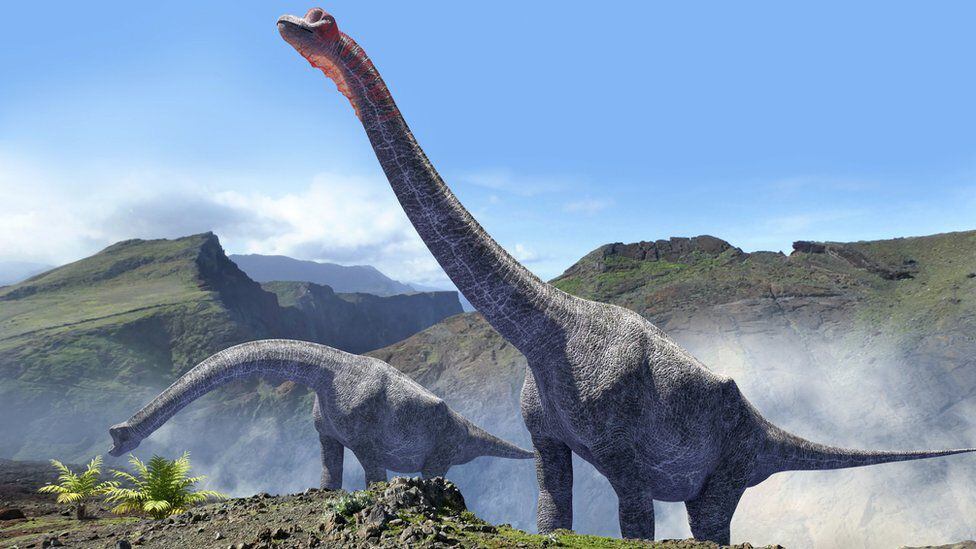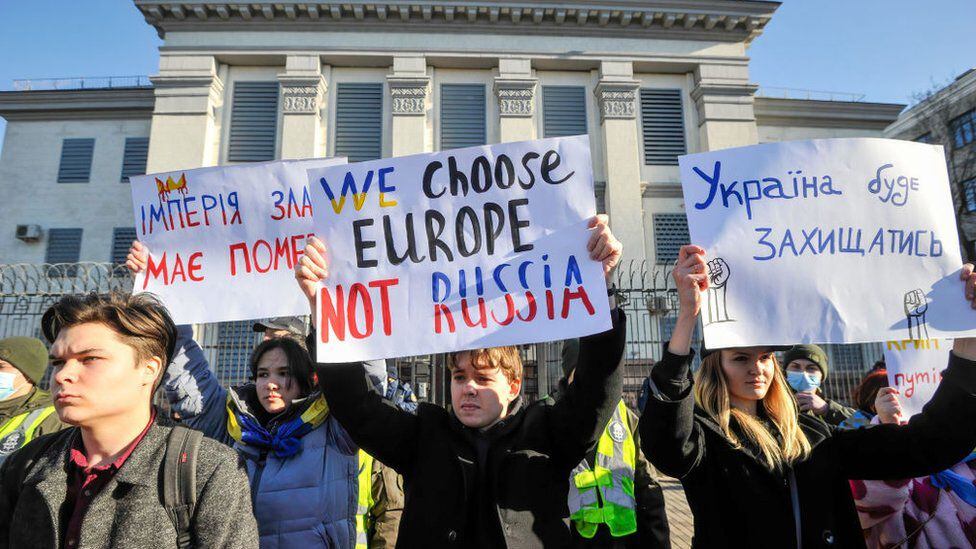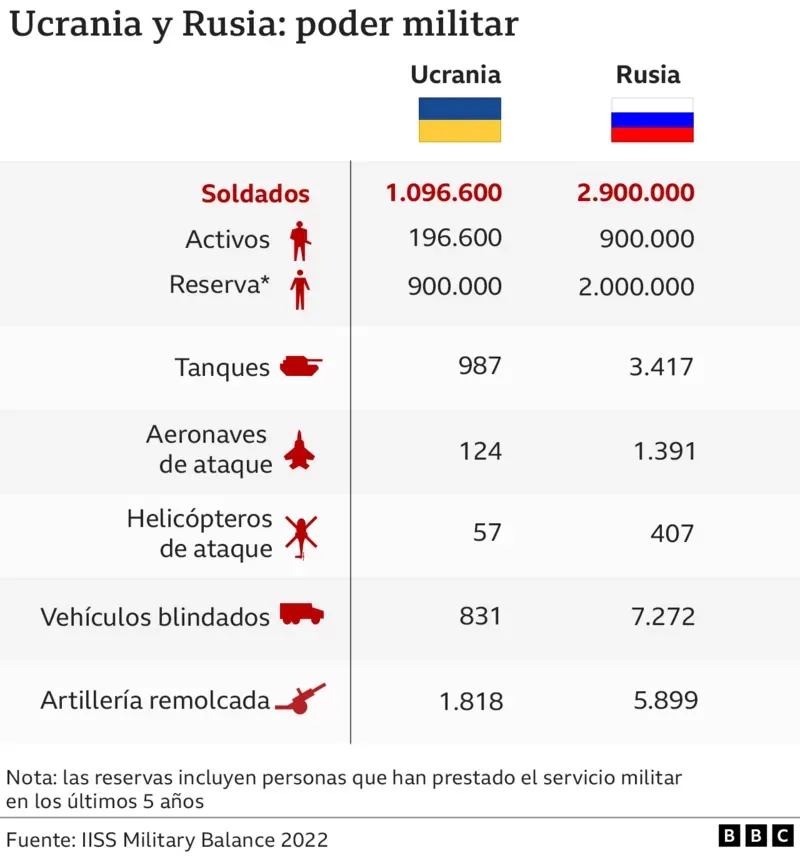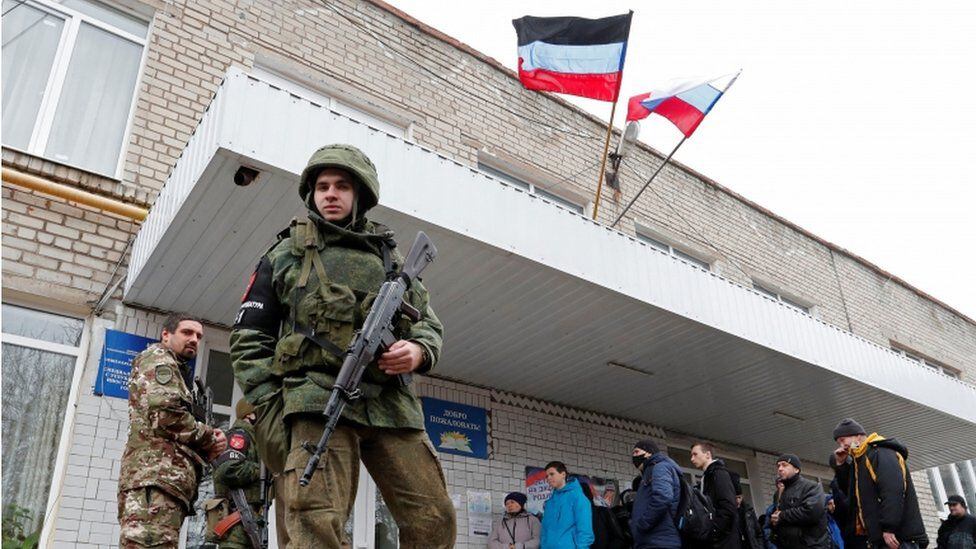Months of tensions and failed diplomatic talks led to the long-feared result: a military invasion of Ukraine by Vladimir Putin’s Russia.
The Russian president justified the operation launched this Thursday in a supposed request from the leaders of the rebel regions of Donetsk and Luhansktwo Ukrainian territories controlled since 2014 by pro-Russian separatist groups and which this week were recognized by the Kremlin as “independent” states.
SIGHT: Ukrainian civilians receive thousands of rifles and prepare Molotov cocktails to defend themselves against the Russian invasion
“I made the decision to carry out a special military operation. Its goal will be to defend people who have suffered persecution and genocide for eight years by the Kiev regime,” Putin said in a statement not supported by any evidence.
He also assured that he was seeking the “demilitarization and denazification of Ukraine”, to which the President of Ukraine, Volodymyr Zelensky, responded by recalling that he is Jewish. “How could I be a Nazi?” he asked.
- 3 keys that explain why Ukraine is so important for Russia
- 4 keys to understand the beginning of Russia’s military operation against Ukraine
- “I am very afraid”: Kiev residents seek refuge after the Russian invasion of Ukraine
and although the Russian president affirmed that his plans “do not include an occupation of the Ukrainian territory”It soon became clear that the Russian military operation would not be limited to “protecting” the rebels in Donetsk and Luhansk, but would cover the entire country.
Russian forces have attacked Ukraine from the east, where the rebel regions of Donetsk and Luhansk are located, but have also attacked from the south, from Crimea, a Ukrainian peninsula that Russia annexed in 2014; and from the northwhere Russian troops are believed to have crossed the triple border where Russia, Ukraine and Belarus meet.
Also to the north, Russian airborne forces seized the Antonov air base, located about 40 kilometers from the Ukrainian capital, Kiev.
But what is Putin looking for with this?
A friendly government in Kiev
“Russia’s strategic objective is to neutralize Ukraine’s sovereignty. Russia considers it essential for its national security that Ukraine does not join NATO or the European Union and that it does not have a pro-Western government,” says Adriano Bosoni, director of analysis at Rane, an American company specializing in geopolitical forecasts, told BBC Mundo.
“On a more practical level, the actions of the last hours basically seek a change of government in Ukraine. They seek to depose the Zelensky government and replace it with a pro-Russian government“, he adds.
Peter Zeihan, an American expert on strategy and geopolitics, agrees that Putin is targeting the Zelensky government.
“His goal is to overthrow the government and install a puppet regime. That is very clear in the speech and he will not stop until the entire territory of Ukraine is considered friendly, as defined by Moscow. So we are seeing here a catch [territorial] wholesale and will probably be followed by an occupation of the countryZeihan said in a video posted Thursday on his YouTube channel.

This operation would also have objectives for Moscow that would go beyond Ukraine, according to Gerald Toal, professor of International Relations at Virginia Tech University in the US.
“From a geopolitical perspective, Putin wants to challenge US unipolar ruleso it is a move that coincides with China’s general objective of challenging that international order,” Toal tells BBC Mundo.
“In terms of European security, he’s looking to tear it apart to show that Russia is back, that it’s a major power that they need to pay attention to. [Su mensaje es que] NATO cannot continue to expand without listening to Russia’s security concerns.”
The Lukashenko model
Adriano Bosoni maintains that the ideal scenario for Moscow would be for Ukraine to follow the example of Belarus, “which is practically a puppet state, totally dependent on Russia, with [Alexander] Lukashenko as perpetual dictator”.
This strategy of forcing a regime change in Ukraine to impose a new “friendly” government is considered “very risky” by Gerard Toal, who has studied public opinion in Ukraine for years and believes that it is very difficult for Russia to have success that way.
“Violence polarizes the situation and makes it very toxic, so any government other than the current one in Ukraine will be seen as capitulating to Russia, as a Russian puppetso I think a majority of the population will mobilize against him and I don’t see how he could succeed,” he says.

The expert indicates that in public opinion surveys in Ukraine carried out in recent years, around 73% of those surveyed said they did not trust Vladimir Putin, while the rest were divided between people who did not want to answer and a part of people who they did trust even a little in the Russian president.
Toal says that while there are undoubtedly places in Ukraine where Russian troops will be welcome, he doesn’t think there is anywhere where most of the population does.
Beyond the difficulties in installing a favorable government in Kiev, Zeihan believes that Moscow will face great challenges to control the Ukrainian territory both because of the resistance of the population and because it is a country that remains largely rural.
“One of the big consequences of Russia’s previous invasions of Ukraine in the last eight years was that the Russians have managed to convince the whole world by their actions there that Russia is no longer a friendly state,” he says.
He adds: “So if this had happened a decade ago, maybe you would have found collaboration from a third of the population of Ukraine, but that time has passed. Now probably less than 5% of people can be counted as collaborators, everyone else will resist“, he assures.

Zeihan compares this situation with that of the US invasion of Iraq in 2003, where the vast majority of the population was against Saddam Hussein, which meant that during the first year of the occupation the United States did not face major difficulties because a part Substantial of the inhabitants were neutral towards US troops.
“That will not happen here. The territory is bigger, the population is larger and more hostile. In addition, it is a country where you can be in the field.
“Unlike Iraq, where a third of the country is desert, Ukraine is an agricultural country and it is different to chase people in the desert, where you can find them with night vision instruments, than to do it in a place where they can disappear in the fields. This is going to be a rough ride home,” Zeihan notes.
But the fact that the prospects for the occupation of Ukraine and the replacement of the Zelensky government do not look easy for Russia does not mean that Putin is left without options.
a divided country
“If for reasons of resistance, violence, struggle, the Ukrainians show better defensive capabilities than the Russians expected, I would not rule out the scenario of a certain partition of Ukraine, in which Russia, through a Republic of null recognition international, is controlling the eastern part of the country, where there is a higher concentration of people who speak Russian and who are pro-Russianwhile what survives of Ukraine stays in the western part of the country, which is the most Ukrainian-speaking and most pro-Western,” says Rane’s Adriano Bosoni.

For Gerard Toal, this would be a “dark scenario” that could work for Russia and that would imply the displacement of the population in such a way that those who remain in those areas are pro-Russianwhile those who oppose Putin’s action are defeated.
“That’s essentially what you have in the Donbas region [región que abarca a Donetsk y Luhansk]. There the supporters of a European Ukraine are in the West. Then, Russia would carry out a ‘cleansing’ campaign, of forced displacement, in such a way that those who remain are those who in one way or another support Moscow,” says Toal.
“That could work in theory, but to keep it going, to end the war, to generate economic development, to build legitimacy and to have a capable state… those are enormous tasks, very difficult to carry out by an occupying army. That is why I believe that this is going to fail and it is going to be a wound in Europe. A wound that will last for some time, unfortunately,” concludes Toal.
_______________________________
- Ukraine compares bombing of Kiev to that of Nazi Germany in 1941
- Ukraine reports the death of 2,800 Russian soldiers on the second day of the invasion
- Why did Russia invade Ukraine and what are Putin’s arguments for war?
- A shocking audio reveals how Russian soldiers threaten and then kill 13 Ukrainian soldiers on an island
- These are the countries that support Russia and those that are with Ukraine
- NATO activates its defense troops for the first time in history to deter Russia
Source: Elcomercio

:quality(75)/cloudfront-us-east-1.images.arcpublishing.com/elcomercio/GE4DCMRNGAZC2MRVKQYDAORRHA.jpg)

:quality(75)/cloudfront-us-east-1.images.arcpublishing.com/elcomercio/7XBPETG4ONAO5DIYUNGJU2NXXQ.jpg)
:quality(75)/cloudfront-us-east-1.images.arcpublishing.com/elcomercio/4A4LBIKHGNA4NMAU3RAUINZ7PI.png)

:quality(75)/cloudfront-us-east-1.images.arcpublishing.com/elcomercio/GAZW3YDH25GIBFWZQPEQZZJVQ4.jpg)
